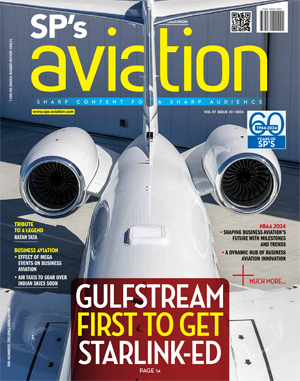INDIAN ARMED FORCES CHIEFS ON OUR RELENTLESS AND FOCUSED PUBLISHING EFFORTS

SP Guide Publications puts forth a well compiled articulation of issues, pursuits and accomplishments of the Indian Army, over the years

"Over the past 60 years, the growth of SP Guide Publications has mirrored the rising stature of Indian Navy. Its well-researched and informative magazines on Defence and Aerospace sector have served to shape an educated opinion of our military personnel, policy makers and the public alike. I wish SP's Publication team continued success, fair winds and following seas in all future endeavour!"

Since, its inception in 1964, SP Guide Publications has consistently demonstrated commitment to high-quality journalism in the aerospace and defence sectors, earning a well-deserved reputation as Asia's largest media house in this domain. I wish SP Guide Publications continued success in its pursuit of excellence.
Technology - A Perfect Blend

Are blended wings likely to become the commercial configuration of choice?
Maybe. But not for another two or three decades. The reasons are economic rather than technical.
Most fixed wing aircraft have a comfortingly familiar shape—a long, tubular body or fuselage, with wings and a tail plane. The form, though practical, is aerodynamically inefficient. The wings produce most of the useful lift. But the body is bulky and unattractive, designed mainly to carry the maximum possible load, and produces a great deal of undesirable drag. In the days when oil was cheap and green was just another colour, drag could be overcome by brute horsepower. But now the era of low-priced oil is practically over and aviation is squarely in the sights of the eco-warriors. Designers are pulling out all the stops to make aircraft streamlined and fuel efficient. What better way than to get rid of the fuselage altogether, leaving only a sleek flying wing?
Flying wings are just that—a single wing with no body. There may, however, be structures attached to the wing. A rather more conventional design is the blended-wing-body (BWB) aircraft. A BWB has a flattened and streamlined body with distinct and separate wings smoothly blended in. The body could produce much of the lift required to support its own weight.
Flying Wings in History
Flying wings and BWB planes have a long and chequered history. In 1929, the German Junkers G.38 blended-wing aircraft was one of the largest airliners of its time—a veritable super-jumbo. It could carry 34 passengers compared with nine by a competitor. Passengers were seated in the wings. Sloping windscreens in the leading edge of each wing gave them a forward-facing view, otherwise available only to pilots. The G.38’s utilitarian design even provided mechanics easy access to all four engines in flight.
A couple of decades later, Northrop pioneered the flying wing design in the YB-49. Unfortunately, the aircraft, which first flew in 1947, was unstable. Engineers lacked the computer controls necessary to make it flight worthy. Besides, its bomb bays were too small for the atomic weapons of the day. In 1948, following an accident that killed five crew, the project was shelved. The flying wing design was resurrected in the 1980s with the B-2 stealth bomber, also built by Northrop Grumman. The B-2 is one of the most advanced bombers currently operational and falls somewhere between a flying wing and a BWB. It is usually classified as a flying wing, since the protruding body sections are not much larger than the main wing.





